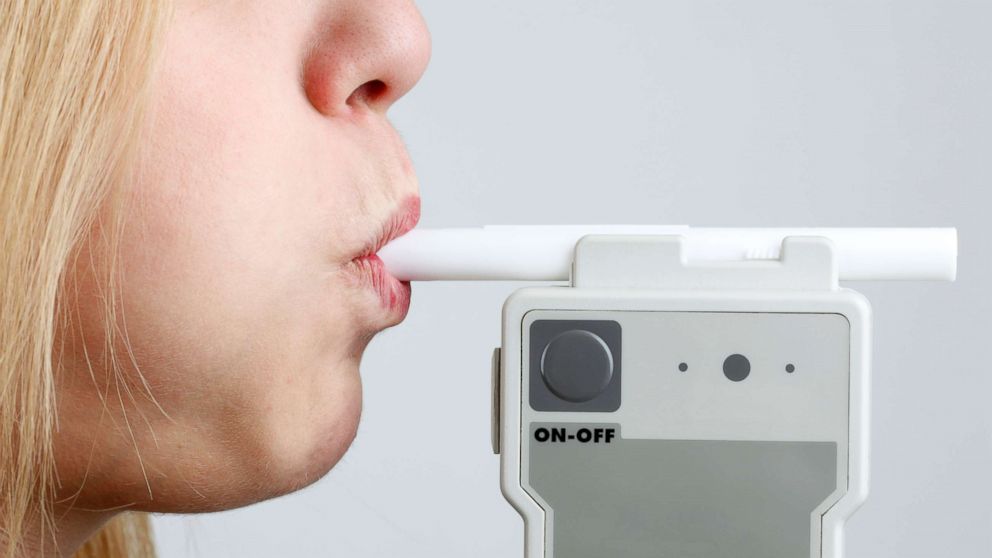


This story is from Kaiser Health News
On Jan. 1, California joined the majority of states that have laws requiring drivers with drunken-driving convictions to install breathalyzers in vehicles they own or operate.
Researchers, public health advocates and political leaders believe these laws are helping reduce alcohol-related road deaths.
The gadgets, known as ignition interlock devices, are mounted on the steering wheel of a vehicle and prevent it from starting if the driver’s blood-alcohol reading is above a predetermined level.
In California, the breathalyzers are mandatory only for repeat offenders. Five other states — Georgia, Indiana, Massachusetts, Montana and Ohio — have similar laws. Thirty-two states and D.C. require the devices even for first-time offenders.
The advent of such laws across the United States in the past 15 years has been accompanied by some good news: Deaths involving drunken driving are only about half of what they were in the early 1980s, though they have ticked back up in recent years. The long-term decline is largely attributable to greater public awareness, stricter seat belt enforcement and the establishment in 2000 of a nationwide legal blood-alcohol threshold of 0.08 percent — far below the 0.15 percent standard commonly used before then.
(MORE: Blood pressure medication recall: What you need to know)State Sen. Jerry Hill (D-San Mateo), the author of the California law, said breathalyzers in cars will make roads safer than under the current law, which generally relies on license restrictions and suspensions.
“We’ve seen people on a suspended license continue to drive and continue to cause destruction,” said Hill, who lost his best friend to drunken driving in the 1980s.
There is some evidence that the breathalyzers have an impact. Nationally, from 2006 to 2016, ignition-locking breathalyzers prevented 2.3 million attempts to drive by people with a blood-alcohol level at or above 0.08 percent — the legal threshold for driving under the influence — according to a 2017 report by the advocacy group Mothers Against Drunk Driving.
Emma McGinty, an associate professor at the Johns Hopkins Bloomberg School of Public Health, found that laws requiring interlocks for all DUI offenders were associated with a 7 percent drop in the rate of fatal crashes caused by drunken drivers. Another study found that laws covering all offenders were associated with 15 percent fewer alcohol-related fatalities compared with states that have less stringent laws.
Federal data show that in some states the number of alcohol-related deaths was lower a few years after the implementation of ignition interlock laws. But the declines could have been caused by multiple factors. In other states, crash deaths were higher. And in some, the number has bounced up and down.
New Mexico was the first state to implement an interlock law that applied to all offenders, including first-timers. The state saw a significant drop in DUI-related deaths about three years after its law took effect in 2005. The biggest dip came seven years after the law took effect, but then the number started to creep up again.
Texas, which enacted an all-offender law in 2015, has seen drunken-driving fatalities rise since then — but that meshes with the national increase recorded in 2016 and 2017. Some researchers think the strength of the economy can influence fatality statistics. “One thing that is often speculated is that as the economy gets better, people drive more,” McGinty said. “By virtue of having more people on the road, [we’re] likely to see an uptick in crashes.”
Oregon enacted its interlock law in 2008, when the state recorded 137 DUI-related fatalities. Two years later, the number of alcohol-involved crash deaths had dropped by almost half, to 70. But by 2015, it had spiked back up to 154 deaths.
The new California law builds on a pilot program in four counties — Alameda, Los Angeles, Sacramento and Tulare — which have required interlock devices in the vehicles of all DUI offenders since 2010.
(MORE: Eat a Mediterranean diet to cut heart disease risk, study says)The statewide law requires installation of an interlock device for one year after the second DUI offense, and for six months after a first offense if somebody is injured. After a first DUI with no injury, the driver can choose to avoid license restrictions by installing a device in his car for six months.
Installation of the breathalyzers runs from $70 to $150, and they cost another $60 to $80 a month to maintain. But the law provides for a sliding scale based on people’s income, so low-income drivers would end up paying only a small percentage of the total cost.
Advocates of interlock laws say they would rather see a statewide California law targeting all DUI offenders, not just repeat offenders. McGinty’s research shows a much smaller decline in alcohol-related fatal crash rates associated with repeat-offender laws.
(MORE: 5 jobs and health insurance: One couple's struggle to pay off $12K in medical bills)But even as is, “the law will make a difference,” said Frank Harris, director of state government affairs at Mothers Against Drunk Driving. “If a person gets a DUI, the next day they can get an ignition interlock device and drive, go to work, go to their kid’s soccer games. The trade-off for society is that those folks are driving sober.”
Kaiser Health News is a nonprofit news service covering health issues. It is an editorially independent program of the Kaiser Family Foundation, which is not affiliated with Kaiser Permanente.